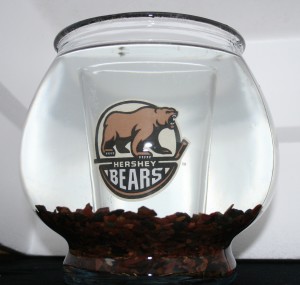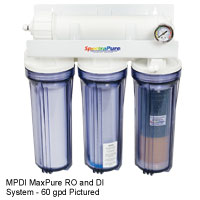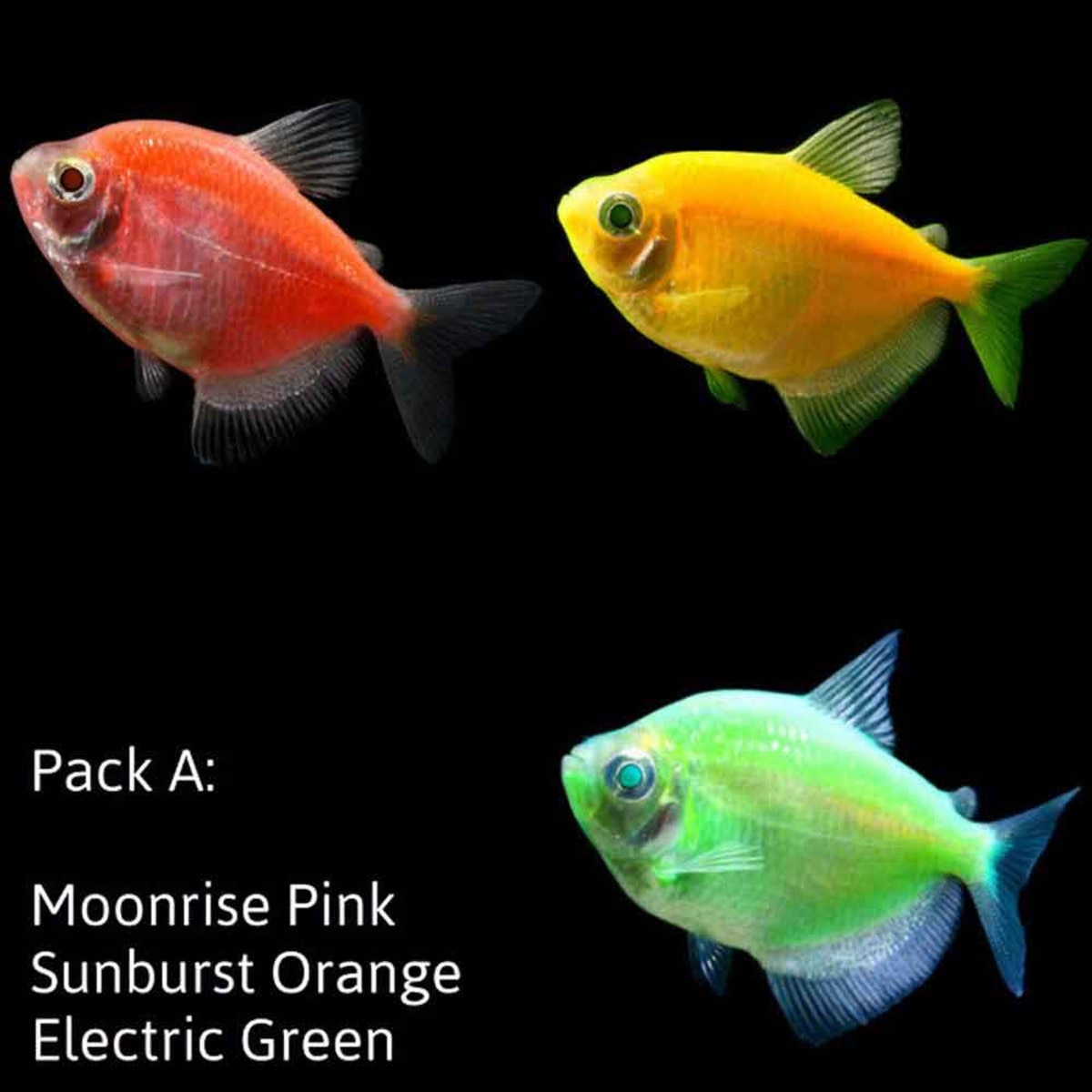Our first blog on Do-It-Yourself aquarium decoration ideas seemed to get so many creative juices flowing that we’re back with some more ideas, tips and examples. In the first blog, we covered some general ideas for how to look at different objects as possible aquarium decorations. This time, we’re going to get more specific based on some of the most common questions from your fellow hobbyists. I created a few different looks after raiding my kitchen cabinets for inspiration using a 2-gallon glass aquarium and a 1-gallon glass bowl but you can adapt the same ideas to aquariums of any size.
Hershey Bears Betta Bowl
 I’m personally a huge hockey fan and have done an NHL Philadelphia Flyers-themed betta in the past using gravel and a plant in their colors. For this one, I kept it pretty simple and used a glass pint glass I had for our local AHL team and my personal favorite, the Hershey Bears, as well as some plant substrate in different shades of brown. Since the logo on the glass is pretty solid, I left the glass empty except for some substrate in the bottom. The glass is sitting on the bottom of the bowl itself and I added the substrate around it to keep it in place. Read More »
I’m personally a huge hockey fan and have done an NHL Philadelphia Flyers-themed betta in the past using gravel and a plant in their colors. For this one, I kept it pretty simple and used a glass pint glass I had for our local AHL team and my personal favorite, the Hershey Bears, as well as some plant substrate in different shades of brown. Since the logo on the glass is pretty solid, I left the glass empty except for some substrate in the bottom. The glass is sitting on the bottom of the bowl itself and I added the substrate around it to keep it in place. Read More »
 That Fish Blog – Aquarium Advice and Information
That Fish Blog – Aquarium Advice and Information




